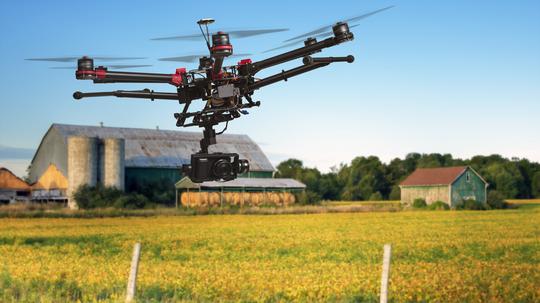
The St. Louis region is considered by many to be the nation’s heart of agrifood tech, leading the development of new tools and strategies that could be applied around the world.
St. Louis delivers an impressive combination of connectivity to grower customers because the region is within a 500-mile radius of more than half of all U.S. agriculture production, including 80% of the nation’s corn and soybeans, according to the St. Louis Agribusiness Club’s 2020 economic study. The headquarters of the National Corn Growers Association, American Soybean Association, United Soybean Board, U.S. Soybean Export Council, Renewable Fuels Association, and the U.S. Farmers and Ranchers in Action are located in the region.
More than 1,000 plant science Ph.D.s., and leading companies across the agrifood tech value chain, including Bayer Crop Science, Bunge and Post Holdings call St. Louis home. 39 North, a 600-acre innovation district is anchored by the Donald Danforth Plant Science Center, BRDG Park, Bayer Crop Science, Benson Hill, CoverCress, the Helix Center Incubator, Yield Lab Accelerator, the St. Louis Community College Center for Plant and Life Sciences, numerous early and mid-stage startups, and the U.S. headquarters of international companies such as KWS and CTC Genomics.
St. Louis is also unique in that it has a heritage of plant science innovation and traction in geospatial intelligence. Geospatial technologies such as remote sensing, GPS and geographic information system (GIS) have existed for decades, but it’s only recently that they’ve been established as important tools for the future of agriculture and, more importantly, global food security.
With these tools now enabling things such as precision agriculture and data-informed decision-making, the time has come to increase and improve collaboration between the historically disparate sectors of agriculture and geospatial to develop meaningful answers to some of agrifood’s most pressing problems. Think war, inflation, disrupted trade and supply chain troubles.
On the geospatial side, the National Geospatial Intelligence Agency – West and their Moonshot labs at T-REX, the Taylor Geospatial Institute and Saint Louis University have attracted a lot of talent to the city.
“We have a big national security presence here in St. Louis that does (geospatial stuff) and that’s our foundation, but our next wave of opportunity is agtech dovetailing into that,” says Andy Dearing, president of Geospatial Advisors. “Whether its row cropping or insurance or carbon credits, it’s all got a geospatial component to it. When we can take these two clusters and bring them together to help solve those problems, it can make a big impact on critical global challenges.”
Geospatial technologies such as GPS or remote sensing allow farmers to understand much more about their land without having to deal with expensive sampling processes or long wait times. Large swaths of land such as commercial farmland will normally have variations in soil types, nutrient availability and other factors from one area of the farm to the next; geospatial technologies can tell farmers and growers where these variations are so they can distribute fertilizers, pesticides, herbicides, water resources and other inputs more efficiently than in the past.
In 2019, the Danforth Center launched The Center for AgTech and Applied Location Science and Technology (CATALST), a unique partnership between the Danforth Center, BioSTL and T-REX. CATALST Partners will work to:
- Source innovation.
- Provide access to proof-of-concept partnerships between entrepreneurs and scientists to conduct research to validate and de-risk their technology.
- Provide an affordable skilled workforce to advance research and development (R&D) by facilitating the recruitment and placement of skilled interns from area academic programs and support talent recruitment as their business grows.
- Educate and train innovators in entrepreneurial practices and connect startups with pilot field sites and customers to give early access and feedback to innovations that improve their on-farm economics and overall competitive advantage.
“Intentionally pairing the region’s emerging location science cluster with our globally recognized agrifood tech cluster provides a perfect combination to scale innovation-based entrepreneurship,” said Stephanie Regagnon, executive director of Innovation Partnerships at the Danforth Center. “This approach will accelerate the pace of innovations that make the agrifood industry more secure, agile and sustainable from farm to fork.”
Do you want to stay up to date with the latest happenings in the community? Join the 39 North newsletter to get monthly updates straight to your inbox.



